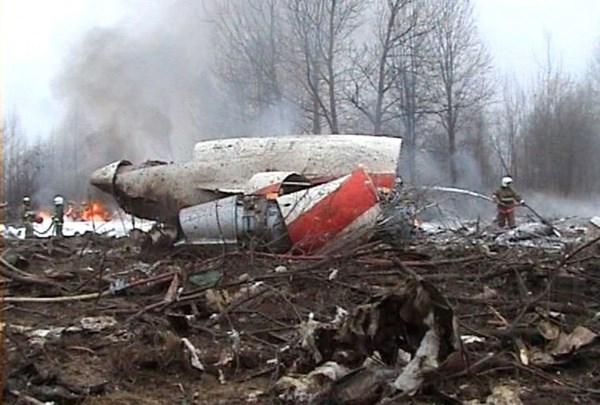Russia denies explosion mark findings on President Kaczynski's plane
The Polish state sub-commission conducting investigation into the crash of President Lech Kaczyński’s Tu-154M plane said that the wing wreckage shows signs of an explosion which are not related to the collision with the birch, but the Investigative Committee of Russia (ICR) dismissed this claim as “baseless”, Interfax reports.
“It is absolutely incomprehensible what these subsequent findings of the Polish experts are based on. When ballistic and explosive experts’ examinations were done immediately after the catastrophe, no signs of the effect of an explosive device on the plane were discovered,” said official ICR representative Svetlana Petrenko.
According to her, on the basis of all the available information, the Russian and Polish experts reached the unambiguous conclusion in 2011 that the collision with the birch caused the beginning of the plane’s destruction.
The fragments of the aircraft are kept in Russian territory as physical evidence in the ICR’s criminal case, and thus “there have been no additional examinations or studies of the plane fragments by Poland since 2014, not even by members of the new Polish investigative commission” the article notes.
The Tu-154 aircraft of the Polish Air Force crashed on 10 April 2010 near the city of Smolensk in Russia. All 96 people on board were killed, including Polish President Lech Kaczyński. He was flying to attend a commemorative ceremony in Katyn at the burial site of Polish soldiers who were executed by the Soviet NKVD in 1940.
Previously the Polish subcommission to investigate the Smolensk catastrophe reported that the Tu-154M began to disintegrate in the air, before it hit the ground, and Polish prosecutors accuse Russian controllers and a certain “third party” of deliberately instigating the plane crash that killed the Polish president.
